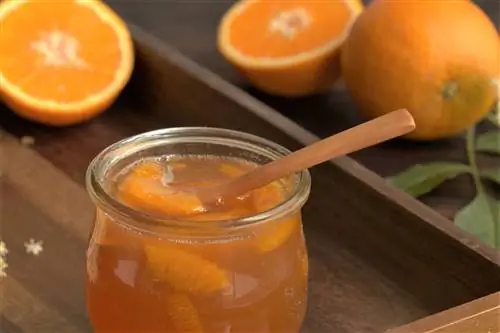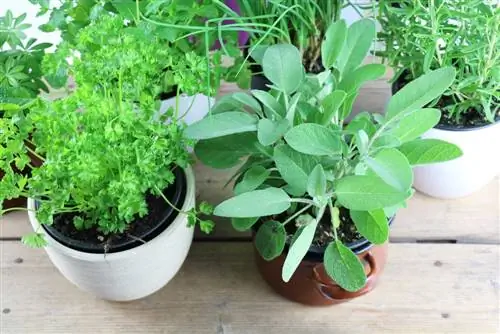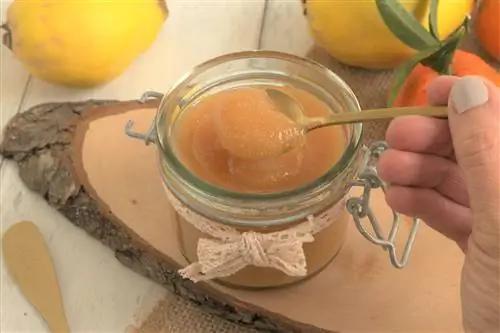- Author admin [email protected].
- Public 2023-12-17 03:39.
- Last modified 2025-01-24 12:45.
The more or less pronounced bitter taste of orange jam is not to everyone's taste. The English love their orange jam and it is finding more and more fans in Germany. It is probably the combination of the sweetness of the oranges and the sugar with a slightly bitter aftertaste that makes this jam so popular.
Making them is a little more complicated than other fruits, but the extra work is worth it. The good thing about jam is that it is cooked at a time when there is no other fruit to process. You can fully dedicate yourself to the production of a variety.
Orange jam tastes best on rolls or croissants, but is also great with poultry dishes.
Choosing fruits
You can't harvest oranges here, you have to buy them. Since the peel is part of the fruit mixture in this jam, you should use untreated oranges. They are a little more expensive than the normal fruits, but you are on the safe side. After all, you don’t want any pesticides in your jam. Bitter oranges (Citrus aurantium) have proven to be ideal for orange jam. They naturally have a high pectin content and the natural bitterness (bitter orange) is ideal for making real orange jam. When buying, you should pay attention to firm fruits. If you prefer sweet orange jam, you can of course leave out the peels, but that's just a matter of taste.
Preparing oranges
There are a variety of recipes for orange jam. Some only use the squeezed juice, others also use and cook the peel. Everyone has their own method and you can experiment and try out different recipes. No matter how you make them, the fruits are peeled. But even then there are differences. Do you have to peel off the white, often thick skin or can you leave it on? The white skin gives the jam a bitter taste. An alternative that is recommended is to put them in an extra bag that you hang in the pot for a short time. You can take it out again at any time. But the bitter mass does not remain in the jam. It's actually best to just squeeze some oranges, the juice is the most important thing. Depending on how much fruit is being processed, you peel the others (for 2 kilograms of bitter oranges, around 4 to 5 pieces). The pulp of these is also used, but without seeds and is best filleted. Cut thin strips from the peel of one or two oranges. If you cut thinly enough, the peel will curl into rings, which looks good in the jam.
Juice, chopped or chopped fruit pieces and peel are put together in a pot. The juice of one or two lemons is usually added to this. This of course includes preserving sugar, as the oranges do not gel without help. But you can also use pectin, e.g. apple pectin, then you can save on sugar.
How long you have to cook the ingredients depends on the recipe. For some, 3 minutes is enough, others let everything simmer for almost an hour before pouring the jam into jars. In any case, the mass must gel. You should do a test for this. Place one or two spoonfuls of the boiling substance on a cold plate. If the mixture thickens quickly, the jam is ready, otherwise it needs to be cooked a bit or more gelling agent added.
Spices
Many people love orange-ginger jam. Depending on how strongly you want it to taste like ginger, add finely chopped ginger. However, ginger has a very strong taste, so you have to dose it. If you only want a little ginger flavor in the jam, ginger powder will also work. You can also use some cinnamon and clove powder, which gives it a different taste. Of course, the orange jam also tastes good on its own, without any other ingredients.
Addings such as rum or Grand Marnier orange liqueur are particularly popular with men.






